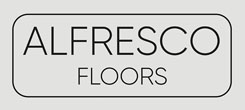
15 Jun How Can Exterior Flooring Pass UK Fire Regulations?

After a fire in a Barking apartment building last year in 2019, concerns about the fire safety of external features and especially balcony and exterior flooring have come to the fore. Here at Alfresco Floors, we understand that contractors, architects, investors, and others involved in the design, construction, and use of new buildings need to know how best to ensure that structures adhere to fire regulations, safety requirements, the most recent advisory notes, and achieve the requisite fire ratings.
The advice that was prompted by the fire is fairly straightforward. The balconies of the Barking structure were poorly designed in terms of fire safety with the use of flammable softwood timber and a lack of flame retardant. Excess timber was used for decorative purposes and served no structural function.

Recommendations for Fire Rated Exterior Flooring
Our general advice regardless of where the space is located is to use materials like natural stone, porcelain, aluminium, and concrete. All of these materials are exceptionally fire-resistant, in addition to being resistant to corrosion and other environmental factors. This applies to sub-frame materials as well as what goes on the surface.
Three Classifications of Fire Rated Flooring
The regulations for flooring are rather complicated and require the use of various materials incorporated into specific design specifications. Knowing what the various fire rating classifications mean is important for code-compliant design.
A1-Rated Materials
A1-rated materials offer the highest level of fire resistance and are completely non-combustible. A1-rated materials such as stone, concrete, and aluminium, are completely fire resistant and will not contribute to the spread of flame.
A2-Rated Materials
A2-rated materials produce no contribution to fire but have the potential to produce some smoke or flaming droplets, hence the additional classification you will see given to A2-rated products.
B-Rated Materials
Class B rated materials are known as the “no flash over materials.” These materials are safe for normal use, however, should sparks or flame make contact with them they may catch fire and they will spread an active flame.
The natural choice for fire rated external surfaces would be either an A1 or A2 material since class B-rated materials are generally not well suited for use in outdoor spaces above 18 metres.
Understanding the properties of the materials you choose for exterior spaces is important not only for general fire safety purposes but also to best suit the intended use of the space.
Unless the stated purpose of an outdoor space calls for B-rated materials, non-combustible materials are almost always the best choice. What’s more, because A1 and A2-rated materials are resistant to rain and other outdoor elements and are very low maintenance, they will tend to save more money in the long run.
Conclusion
Put simply, exterior flooring can pass UK Fire Regulations by utilising class A-rated materials in all elements of their construction. For more information on our non-combustible options, don’t hesitate to talk to an expert today.




Sorry, the comment form is closed at this time.